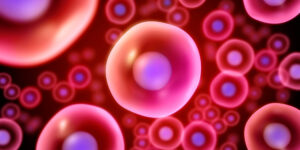The birth of the receptor concept dates back to the early work of John Newport Langley (1852-1925), a Cambridge physiologist who postulated in 1905 that a “receptive substance” on the surface of skeletal muscle mediated the action of nicotine. At about the same time, Paul Ehrlich (1854-1915), a German immunologist who was the founding father of chemotherapy, came up with a “side-chain theory” of cell receptors to explain the selectivity of immune reactions, winning him the Nobel Prize in Physiology or Medicine in 1908. His famous adage “Corpora non agunt nisi fixata” (“Substances do not act unless they are bound”) is an elegant and concise early statement of the receptor theory.
The receptor concept was put on more solid ground with the seminal 1948 paper of Raymond P. Ahlquist (1914-1983), an American pharmacologist of Swedish descent at the Medical College of Georgia. He proposed that the excitatory and inhibitory effects of adrenotropic agents were mediated by two separate receptors which he termed a and b. However, the receptors would remain hypothetical entities until the late ’60s, when direct methods to study their biochemistry were developed.
Click below to download the full article.


